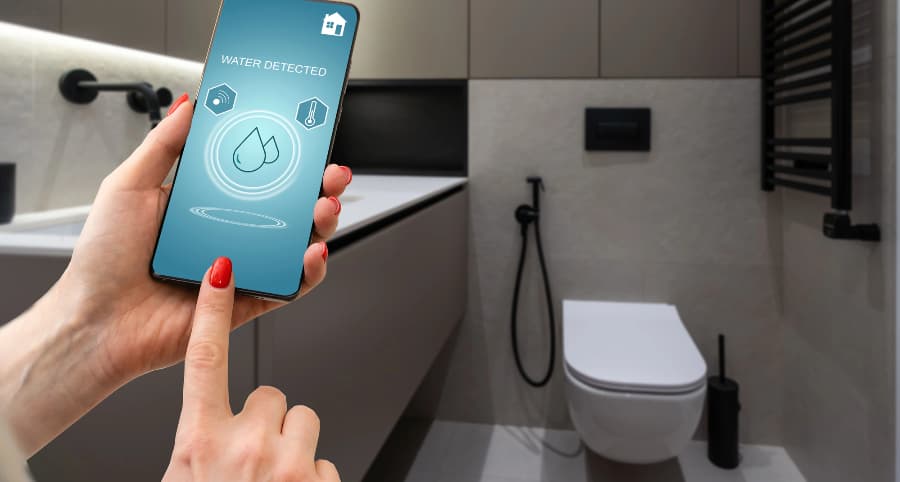How does a water sensor work and why install one with your Duluth smart home?

One minor leak in your home can lead to significant issues and thousands in damage. You must defend against this danger; fortunately, there’s a simple way to do so. A water sensor is a simple, effective, and budget-friendly solution. Explore how they work and why you ought to connect water sensors to your Duluth smart home.
How water sensors protect Duluth properties
Water infiltrates homes in many ways, whether from a storm-related event, plumbing problem, appliance breakdown, or just human error. However it takes place, you need to know right away, and this is where water sensors come in. But how do they really work?
Many water sensors are conductive and work with two electrodes. When water makes contact with the electrodes, an electrical connection is created, triggering your alarm. You’ll also come across capacitive sensors that emit an electrical field. Your alarm activates when water contacts the conductive parts of these sensors and disrupts the field. Optical sensors utilizing infrared LED light are an additional option.
Some water sensors give you more
A few innovative water sensors offer even more defense as they have integrated temperature sensors. This is a helpful way to prevent frozen pipes. If there’s an extreme drop in temperature, you’ll be notified at once. Taking steps before pipes break will protect you from water infiltration and exorbitant repair costs.
Why connect water sensors to your Duluth smart home?
When water emergencies happen, you must be notified immediately. You can reach this objective by integrating water sensors into your smart home. Whether you’re there to hear the alarm or somewhere else, you’ll be sent an instant update on your mobile device. As an added benefit, your 24/7 monitoring team will be notified. Each second counts in a water emergency to limit the damage and disturbance to your household.
Where should you install water sensors?
Any area prone to flooding is a suitable position for water sensors. Consider installing in these locations:
- Bathrooms: Place near bathtubs or behind toilets.
- Basements: Water often seeps into lower levels via leaky walls or as a result of heavy rain or faulty sump pumps.
- Around water heaters or appliances: Any water-connected appliance might leak in time.
- Below sinks: Water sensors are great for discovering leaky pipes in areas hidden from view.
- Attics: Detect roof leaks quickly and avert costly repairs.
Request water sensors with your Vivint smart home
Give your home the complete protection it requires with innovative components from Vivint. Our water sensors in Duluth connect to your Vivint mobile app to provide automatic alerts whenever your alarm activates. You also enjoy integrated temperature sensors to avert frozen pipes. Explore the smart home components available in Duluth by dialing (218) 585-7945 today.